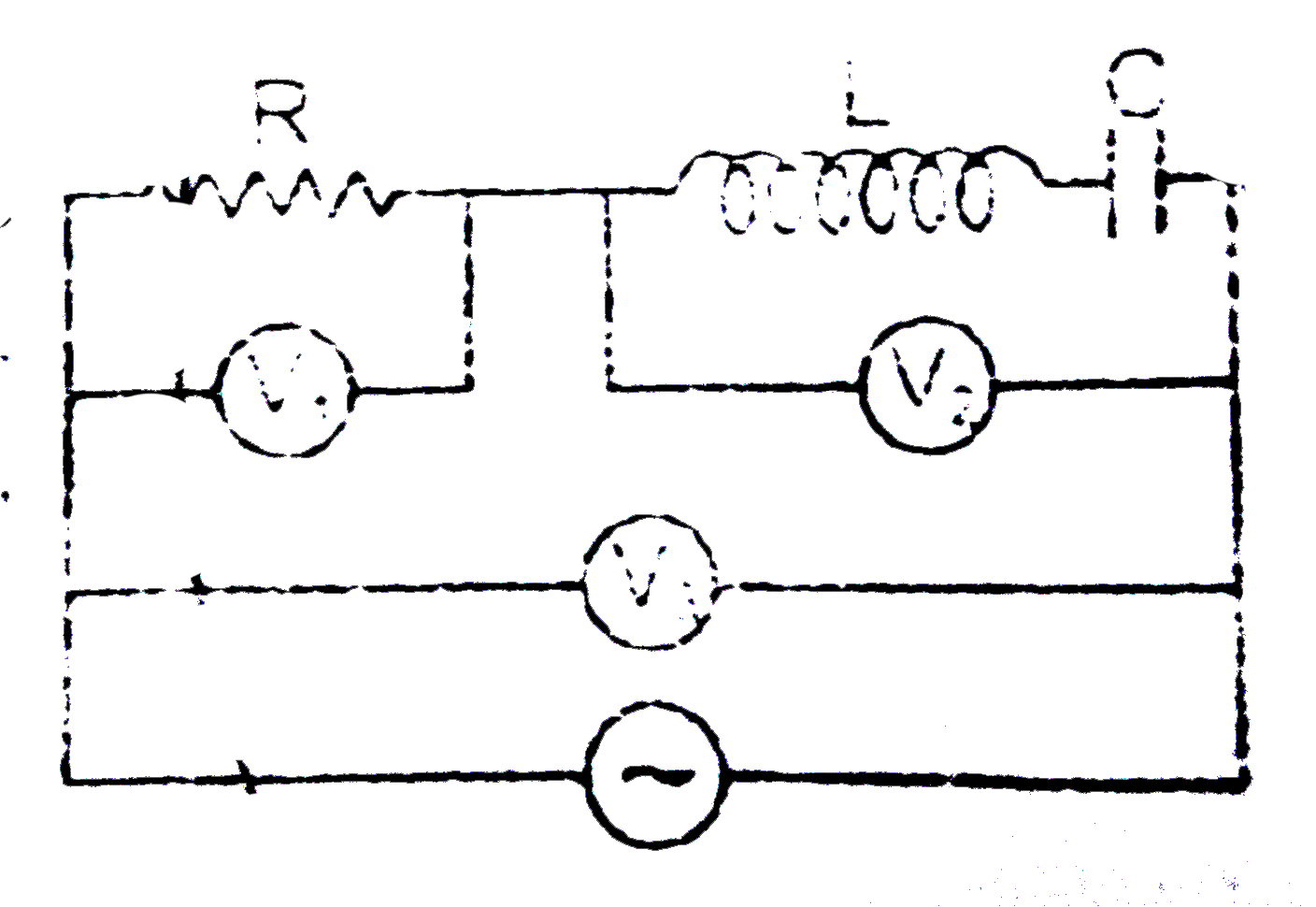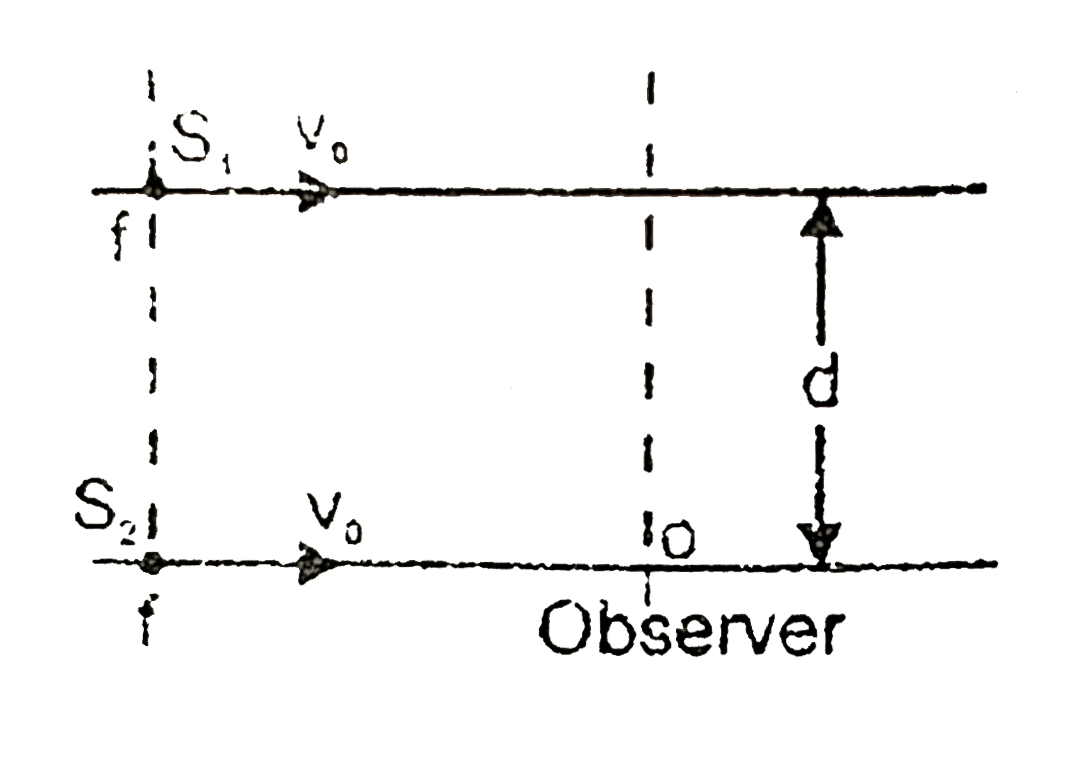Assertion: If we see the oscillations of a stretched wire at higher overtone mode, frequency of oscillation increases but wavelength decreases.
Reason: From v=fλ,λ∝1f as v = constant.
If both Assertion and Reason are true and the Reason is correct explanation of the Assertion.
If both Assertion and Reason are true but Reason is not the correct explanation of Assertion.
If Assertion is true, but the Reason is false.
If Assertion is false but the Reason is true.
The correct Answer is:A
To solve the question, we need to analyze the assertion and the reason provided:
Assertion: If we see the oscillations of a stretched wire at a higher overtone mode, the frequency of oscillation increases but the wavelength decreases.
Reason: From the relation v=fλ, λ is proportional to 1f as v is constant.
1. Understanding Wave Properties:
- In a stretched wire, waves can oscillate in different modes, known as harmonics or overtones. The fundamental frequency is the first harmonic, and the higher frequencies are called overtones.
2. Analyzing the First Overtone:
- For the first overtone (or second harmonic), the wave has one node at each end and one antinode in the middle. The wavelength (λ1) for the first overtone can be expressed as:
λ1=2L1=2L
- Here, L is the length of the wire.
3. Analyzing the Second Overtone:
- For the second overtone (or third harmonic), there are two nodes and two antinodes. The wavelength (λ2) for the second overtone can be expressed as:
λ2=2L3
- As we can see, the wavelength decreases as we move to a higher overtone.
4. Frequency Calculation:
- The frequency (f) of a wave is inversely related to its wavelength when the wave speed (v) is constant:
v=fλ
- Rearranging gives:
f=vλ
- Since v is constant for a given medium, as the wavelength decreases, the frequency must increase.
5. Conclusion:
- Therefore, as we move to higher overtone modes, the frequency of oscillation indeed increases while the wavelength decreases. This confirms the assertion.
6. Evaluating the Reason:
- The reason provided states that λ is proportional to 1f when v is constant. This is correct because it directly relates the frequency and wavelength in a wave equation.
7. Final Statement:
- Both the assertion and reason are true, and the reason correctly explains the assertion.
Final Answer:
Both assertion and reason are true, and the reason is the correct explanation of the assertion.
---
- In a stretched wire, waves can oscillate in different modes, known as harmonics or overtones. The fundamental frequency is the first harmonic, and the higher frequencies are called overtones.
- For the first overtone (or second harmonic), the wave has one node at each end and one antinode in the middle. The wavelength (λ1) for the first overtone can be expressed as:
λ1=2L1=2L
- Here, L is the length of the wire.
- For the second overtone (or third harmonic), there are two nodes and two antinodes. The wavelength (λ2) for the second overtone can be expressed as:
λ2=2L3
- As we can see, the wavelength decreases as we move to a higher overtone.
- The frequency (f) of a wave is inversely related to its wavelength when the wave speed (v) is constant:
v=fλ
- Rearranging gives:
f=vλ
- Since v is constant for a given medium, as the wavelength decreases, the frequency must increase.
- Therefore, as we move to higher overtone modes, the frequency of oscillation indeed increases while the wavelength decreases. This confirms the assertion.
- The reason provided states that λ is proportional to 1f when v is constant. This is correct because it directly relates the frequency and wavelength in a wave equation.
- Both the assertion and reason are true, and the reason correctly explains the assertion.
Both assertion and reason are true, and the reason is the correct explanation of the assertion.
Topper's Solved these Questions
- SUPERPOSITION OF WAVESBook:DC PANDEY ENGLISHChapter:SUPERPOSITION OF WAVESExercise:Level 1 Objective
Explore 11 Videos
- SUPERPOSITION OF WAVESBook:DC PANDEY ENGLISHChapter:SUPERPOSITION OF WAVESExercise:Objective Questions
Explore 1 Video
- SUPERPOSITION OF WAVESBook:DC PANDEY ENGLISHChapter:SUPERPOSITION OF WAVESExercise:Exercise 18.4
Explore 3 Videos
- SOUND WAVESBook:DC PANDEY ENGLISHChapter:SOUND WAVESExercise:Exercise 19.7
Explore 4 Videos
- THERMOMETRY THERMAL EXPANSION AND KINETIC THEORY OF GASESBook:DC PANDEY ENGLISHChapter:THERMOMETRY THERMAL EXPANSION AND KINETIC THEORY OF GASESExercise:Medical entrance gallary
Explore 30 Videos
Similar Questions
Assertion : When temperature of a body is increased, in radiant energy, number of low wavelength photons get increased.
Reason : According to Wien's displacement law λm∝1T.
View SolutionAssertion: A wire is stretched and then fixed at two ends. It oscillates in its second overtone mode. There are total four nodes and three antinodes.
Reason: In second overtone mode, length of wire should be l=3λ2, where λ is wavelength.
View SolutionHow are the wave velocity V, frequency f and wavelength λ of a wave related ? Derive the relationship.
View SolutionA resistor R, an inductor L, a capacitor C and voltmeters V1,V2 and V3 are connected to an oscillator in the circuit as shown in the adjoining diagram.When the frequency of the oscillator is increased, upto resonance frequency, the voltmeter reading (at resonance frequency) is zero in the case of:

View SolutionAssertion: Wave speeds is given by v=fλ. If frequency f is doubled, v will becomes two times.
Reason : For given conditions of medium wave speed remains constant.
View SolutionLength of a stretched wire is 2m. It is oscillating in its fourth overtone mode. Maximum amplitude of oscillations is 2mm. Find amplitude of oscillation at a distance of 0.2m from one fixed end.
View SolutionAssertion : From the relation C=qV We can say that, if more charge q is given to a conductor, its capacitance should increase.
Reason : Ratio qV will remain constant for a given conductor.
View SolutionAssertion: A charged particle is moving in a circle with constant speed in uniform magnetic field. If we increase the speed of particle to twice, its acceleration will become four times.
Reason: In circular path of radius R with constant speed v, acceleration is given by v2R
View SolutionTwo identical source moving parallel to each other at seperation 'd' are producing sounds of frequency 'f' and are moving with constant velocity v0. A stationary .observer 'O' is on the line of motion of one of the sources. Then the variation of beat frequency heard by O with time is best represented by: (as they come from large distance and go to a large distance)

View SolutionAn audio oscillator capable of producing notes of frequencies ranging from 500Hzto1500Hz is placed constant tension T. The linear mass density of the wire is 0.75g/m. It is observed that by varying the frequency of the oscillator over the given permissible rang the sonometer wire sets into vibration at frequencies 840Hzand1120Hz.
a. Find the tension in the string .
b. What are the frequencies of the first and fourth overtone produced by the vibrating string?
View Solution